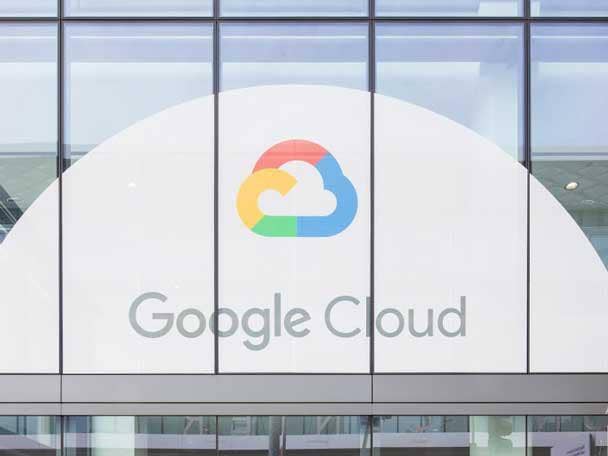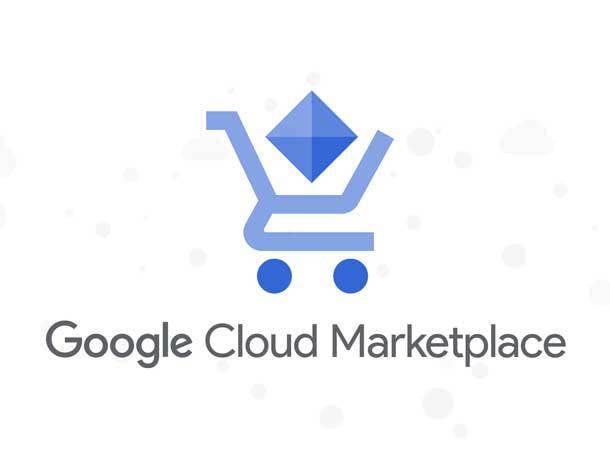Google Cloud Star Quantiphi On ‘Positive Evolution’ For Partners
Quantiphi leader Asif Hasan explains to CRN the partner benefits of Google Cloud’s new stackable incentive model, private offerings on Google Cloud Marketplace and how the cloud company differentiates itself from the competition.

With an army of 2,200 professionals focused exclusively on Google Cloud, fast-growing Quantiphi is bullish about the slew of new enhancements Google Cloud launched this month aimed at taking partner incentives and life-cycle services to the next level.
“This evolution of Google Cloud incentives is deeply attractive to us,” said Asif Hasan, co-founder and top executive at Quantiphi, and a member of Google’s Partner Advisory Council.
“Google Cloud has deconstructed the customer life cycle,” Hasan told CRN. “They’ve identified some of those friction points, and they’ve incentivized the entire partner ecosystem to collaborate together and make the customer successful. … This is a really positive evolution for partners.”
[Related: 40,000 Tech Layoffs: Amazon Vs. Google Vs. Microsoft]
This month, Google Cloud unveiled its 2023 partner program plans that included increasing margins, expertise and customer opportunities, launching a new unified cloud migration program, a new support desk and knowledge base for partners, introducing product-family-specific tracks and rolling out a new partner incentive model that creates stackable incentives.
In addition, Google Cloud is now enabling partners to provide private offerings on the Google Cloud Marketplace, which Quantiphi plans to leverage this year.
Quantiphi’s Bet On Google Cloud
Marlborough, Mass.-based Quantiphi is an artificial intelligence digital engineering specialist and top national partner for cloud leaders including Google Cloud and Amazon Web Services.
Hasan said Google Cloud stands out due to some foundational pillars including its open ecosystem and open cloud technology philosophy that bodes well for the long term.
“In the long run, building an open ecosystem business is much better and profitable. But your horizon has to be like 10 to 15 years because it takes much longer, but it’s much more sustainable,” said Hasan, who co-founded the company in 2013.
Quantiphi has won various Google Cloud awards over the years, including the Google Cloud Breakthrough Partner of the Year Award in 2021 and Google’s 2020 Partner of the Year Award for Public Sector. The cloud services all-star also won AWS’ 2022 Industry Partner of the Year award as well as AWS’ 2022 ML/AI Partner of the Year award.
In an interview with CRN, Hasan talks about Google Cloud’s revamped partner strategy and its plans to launch new private offerings on the Google Cloud Marketplace as well as why Quantiphi is bullish about Google Cloud’s future.

Google Cloud CEO Thomas Kurian
Google Cloud incentives and investments for partners grew by more than 50 percent in 2022. CEO Thomas Kurian told us Google is striving for a 100 percent partner-attach rate. What are your thoughts on Google Cloud’s future as one of its most strategic partners?
We have been beneficiaries of their investments that have been made through the pandemic and then continuing in 2022. In order to understand why this is happening, you must look into the underlying philosophy of how Google Cloud is building their business. There are a few foundational pillars.
No. 1 is open cloud.
What that means is that the underlying technology that is being used is open source, which means customers can actually take their workload to any on-premises [environment] or any other cloud, if they choose to. But what we’re doing is making it, from an engineering standpoint and from an economic standpoint, the best place to run those open workloads. That’s a long game—that’s No. 1.
No. 2 is it’s an open ecosystem business.
It’s a platform where they are matching customers with suppliers like us. When you run an open ecosystem business, the success criteria becomes the way that you manage the delicate balance of the ecosystem, as opposed to command and control and those types of things.
In the long run, building an open ecosystem business is much better and profitable. But your horizon has to be like 10 years to 15 years away because it takes much longer, but it’s much more sustainable
This is because, over time, if customers prefer it and partners are incentivized well, the platform will sell on its own, essentially. That’s the underlying philosophy.
And that explains a lot of the investments that are being made at Google Cloud that are somewhat different from other players in the market.

Does Google Cloud not having a large services organization help differentiate itself for you?
Yes, absolutely.
If you compare relative sizes of [cloud] service organizations, you will see that this whole thought process of enabling partners and the partner-first mindset when leading engagements, you can see quantifiable differences across different players.
We are very optimistic about our relationship with Google Cloud. We work with other hyperscalers as well.
To varying degrees, everyone is making investments. Some are still in the investment mode, some are a little bit more mature and harvesting more in terms of what they’ve invested. But what’s happening in the cloud hyperscaler world is actually very positive for customers.
From our standpoint being a Google Cloud partner, we feel that their philosophy is actually much more partner-friendly and identifies with our own philosophies in business.
And in general, I think it is good for the market and good for the customers overall.

Can you talk about the ability for partners to now sell private offerings on the Google Cloud Marketplace and how that will help partners like Quantiphi?
So prior to private offerings, if I wanted to transact through the Marketplace, I would have to build a solution that is multitenant, that any customer can come and do self-service, self-on-boarding, etc. and it can be equally applicable to an entire customer segment.
It had to be architected in a way that it was multitenant and big scale. That of course increased the amount of investment that we had to make and increase the timeline of putting something on Marketplace.
But not everyone wants to do that.
The new private offer, essentially what it means is that I can create a value-added customer solution for a single customer. And I can make that available as a private offer and I can transact it through the Marketplace.
The customer only has to sign one contract with Google and the Marketplace addendum with us. So it makes the paperwork much easier.
Second is that the associated [Google Cloud] field sales rep is able to get incentivized for working with us to facilitate that sale. So they can get credit for it and compensation for it.
Third is the customer is able to burn down their [cloud spending] commit backlog at the same time.
What that means is the value-added layer of the work that we have done is now available to customers to burn down their backlog.
Before private offers existed, a customer would have one service contract with us and then one platform contract with Google. And only the consumption would have been allowed to be set against the cloud spending commitment—not our work. Not our value-added layer. Right now, with the private offers you can do both.
Will Quantiphi put more offers now on the Google Cloud Marketplace?
We just recently put our first solution on the Marketplace.
We have plans to put another five solutions onto the Marketplace. We are also working on a few private offers. So for us, private offers is a big improvement. Because as a services organization, we do a lot of custom digital transformation work for customers. It’s very bespoke in nature.
So Marketplace, given the constraints in the way it was set up, we could never leverage it. Now with private offers, we are able to leverage it more and increase the adoption.
I feel it’s going be good for the customers, good for Googlers and good for Quantiphi.

Google Cloud is creating stackable incentives to incent partners through every stage of the life cycle, including incentives for transaction, proofs of concept, specific products, successful deployments, consumption, etc. Does this help Quantiphi?
If you take a customer through the life cycle, you have to identify the ideal customer profile and target them and make them aware of Google Cloud. So there is marketing funds that are available to a partner to do that.
Then when you have a discovery conversation and the customer wants to try out some sort of pilot or proof of concept, etc. to establish a technical solution, there is an incentive for that.
Then if the customer says, ‘Yes, we are now willing to sign on the dotted line and come on board the platform and commit to spending a certain amount,’ there is the reseller margins for that.
Then there’s incentives for certain workloads. Then as the migration is happening, Google wants to make sure that a credential workforce is actually working on it. So there is the certification and the Delivery Readiness Index incentive for that. Then their Net Promoter Score, which is the ultimate metric of customer advocacy and customer satisfaction, there’s an incentive for that.
So what Google Cloud has done is deconstructed the customer life cycle.
They’ve identified some of those friction points, and they’ve incentivized the entire partner ecosystem to collaborate together and make the customer successful.
For example, we don’t do reseller business. So we are not in the middle of the transaction where we’re essentially putting it on our paper and reselling, but we are at the front end and we are at the tail end. We can collaborate successfully with other reseller partners because each of us have our own swim lanes.
So it’s stackable in the sense that it’s modular.
Stackable means that you can get more than one incentive. Modular means each one of them is mutually exclusive and stand-alone. So that the right partner who has the best ability to help the customer in that part of the journey is incentivized to do that work.
It’s pretty elegantly designed.

Google Cloud is unifying all its migration programs into one, as well as providing best practices, tools and runbooks to drive successful cloud migrations. How will this make life easier for partners?
We’ve been very deeply involved in this, even from inception, all the way to development of the toolkits and runbooks and things like that.
In the early stages of technology evolution, the type of work that is involved is very much similar to a craftsman’s work—where you have to construct everything layer by layer from the ground up. Over time, what happens is you learn some repeatable patterns. You’re able to create building blocks.
So the process of migration or any sort of technology deployment goes from an artisan-like work to more of an assembly, which is almost as customizable as the craftsmanship model, but it is also very scalable. The customer gets something that is very predictable.
What Google Cloud has done in the migration programs is they have identified repeatable patterns.
For example, you’re setting up an environment for a health-care customer and that health-care customer has to have some common building blocks across all customers—such as people compliance and high-tech credentialing—which are baked into a module.
You say, ‘OK, I’m going deploy this module.’ It automatically deploys. So it’s an abstraction.
Then there’s a toolkit that says, ‘Here’s the best pathway for you to go from implementation to having a staging environment that is set up, which matches all of the requirements of this industry or domain, etc.’ So these are all repeatable patterns.
They’ve made all of this available through these toolkits and runbooks and things like that.
It makes the job of a partner like us much easier, much faster and much more consistent.